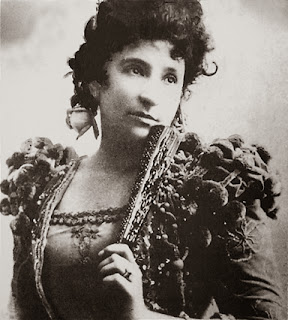It’s over twenty years since I started researching and writing about the life and work of the great Australian diva, Dame Nellie Melba. Throughout that time, when I asked professional singers and other musicians about her, they would smile knowingly, and there would be a pause…
“Don’t you know that she was into oral sex?… In the intervals
of operas… in her dressing room… said it was good for her vocal cords.”
I must have heard it dozens of times. And yet, of course,
there seems to be no real evidence, beyond the fact that it’s an urban myth.
So I was quite surprised to read in Rupert Christiansen’s
column in the Daily Telegraph recently that she would “haul stage hands into
her dressing room…” Someone had told him that it was true – and Christiansen’s
story at least has the embellishment of the stage hands.
How can one possibly know the truth at this distance in
time? And only recently I was told that the original story was not about Melba
at all, but about her great competitor, the Italian soprano Luisa Tetrazzini.
Of course, there’s no actual evidence for that either,
unless, of course, someone in the know told you…














